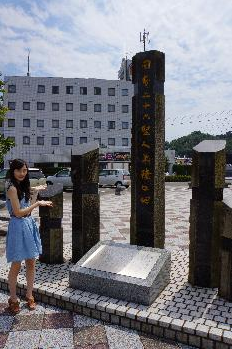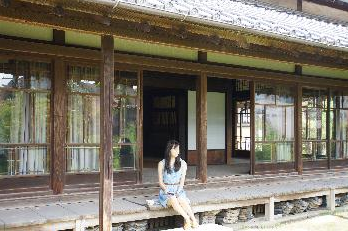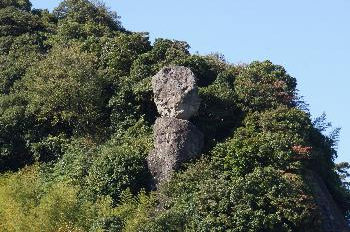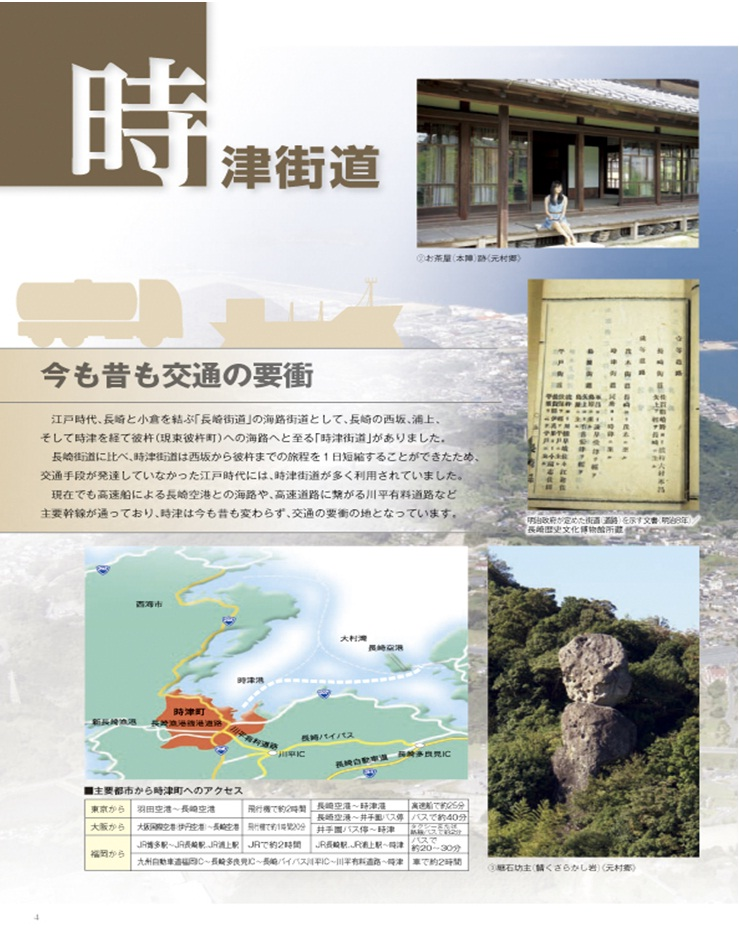Togitsu Road(「時津街道」翻訳)
Looking into the history of Togitsu Road, you can see both the new and traditional aspects of Togitsu.
In the Edo period, since Nagasaki was the only place that was open to foreign countries, it used to be a busy city that many people came to visit. Not only merchants who looked for rare goods but also those who wanted to study headed for Nagasaki; the only city where they could have access to Western culture.
Nagasaki Road, which passes through the Himi Pass to Yagami area, was the main route that introduced imported products to Japan. There is also another route called Togitsu Road, which runs from Nishizaka to Sonogi, through Urakami and Togitsu.
In the late Edo period, the tea cultivated in East Sonogi was shipped to Togitsu and exported to foreign countries from the Nagasaki Port by such merchants as Kei Oura, who was the first woman to export tea to foreign countries.
Togitsu Road starts from the wharf where Ebisu, who guards the Omura Bay, was enshrined. The land where the wharf is located used to be a different shape, but has changed to its current shape after being reclaimed from the bay.
It was a severe cold morning on February 5, 1597. Twenty six Christians including the Father Pedro and two boys were barefoot and bleeding while walking through this road. They were crucified on the hill because of the oppression of paganism. People deplored their deaths and called them “Twenty-six Martyrs.” There is a big monument next to Ebisu on the wharf. It is the commemoration of their landing.

From the monument, go straight on the wider national route and turn left at the traffic light and you will get to Nakadori Shopping Street. The area including the street, is called “Ichiba” (a market). Since the area used to be beside the sea, there was a “Tomozuna Stone,” which moored ships to the land. The stone was removed when the road was expanded and is now preserved under the trees in the garden of the Hachiman Shrine.
Continue going straight after turning right at the Hachiman Shrine and there is an intersection across the Nagayo Street where you will see a guidepost. Around the stone wall covered with ivy right behind the guidepost, there remains a chaya (or a teahouse), which used to be very crowded with people.

Leaving the chaya and going towards Nagasaki City, you will reach Route 206. As you cross the route and walk along Togitsu Road, you can get to the Idezono area, where you can see “Tsugiishibouzu,” a symbol of Togitsu Town, in the mountains on the right. This stone statue looks as if it is going to fall down at any moment. The stone statue is well-known in the area accompanied by the following anecdote:
Once upon a time, a fish (mackerel) monger thought the stone statue would soon fall, so he decided to wait to see it fall down. Waiting all day long, his fish were all spoilt.
Due to this anecdote, the statue is called “the rotting-mackerel stone.” More specifically, this stone came to be widely known by Nanpo Ota, who was a well-known comic poet in the Edo period. He visited Togitsu in 1805 while working in Nagasaki, and composed the following verse looking at the strange stone: “If I continue to watch the stone on the edge of another stone, I can understand we will spoil our fish.”

Going past some council housing on the left, a new bridge called “Uchizakabashi” appears. Stepping stones used to be placed in the river, but now the land is reclaimed.
Uchizaka, the most difficult place to go, starts at this point. Many people heading for Nagasaki City had troubles here because their cows and horses couldn’t walk up because of their heavy luggage and the steep slope. “Uchizaka” was named after the whips used to make the cows and horses keep walking.
Crossing Uchizaka, you will see a Jizo statue, the guardian of travelers and children, on your left. The Jiizo statue was built in honor of a bus driver named Michio Onizuka. He bravely sacrificed himself to save his passengers from an accident in 1947. The Jizo statue is called the “Love Jizo” and keeps an eye on pedestrians, praying for their safety.
In addition, on the right side on the “Love Jizo,” you will see the only university of foreign studies in Nagasaki, the Nagasaki University of Foreign Studies.
Keep going along the national route, and you will arrive at the crossroads where there is an information board that determines the border between Nagasaki City and Togitsu. From here, Togitsu Road runs approximately 12km-long to Nishizaka, through Nameshi, Iwaya, and Akasako.
As seen above, there are a lot of historic sites on Togitsu Road and people have used this road as an important transportation route for a long time. Visit Togitsu Road and you will come to understand the history, tradition, and unique feature of Togitsu.


- この記事に関するお問い合わせ先



更新日:2019年03月01日